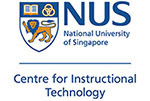Web 2.0 is a concept first mentioned by O'Reilly Media in 2005. This concept, at its core, distinguishes between the generally unidirectional character of the old web (read-only) and the flurry of new online applications and services which allowed for user input and interaction (read/write).
Prior to 2003/4, most web services and websites offered information with little or no scope for interaction or information sharing.
With better broadband penetration in the home user market, more powerful personal computers and better programming languages in recent years, web developers began developing services that offered interactivity, personalization, content sharing and content aggregation.
So, the term Web 2.0 is popularly used to indicate websites and web applications which allow people to subscribe to content; share and distribute it; and customize and repurpose it. These sites usually allow for a great deal of interaction and collaboration. Hence, Web 2.0 is often conflated with the term social software. Besides the interactivity of Web 2.0, the term is also closely linked with user-generated content.
Some examples of these new generation services include blogs and wikis and sites such as Flickr, YouTube, BaseCamp, Google Spreadsheets & Docs, Google Maps and MySpace, to name a few.
A substantial list of Web 2.0 sites can be found at Listible's Complete List of Web 2.0 Products and Services. A more visual list is available at Go2Web2.0.net. You can also keep tabs on the latest Web 2.0 developments at the Read/WriteWeb blog.
Personal Learning Environments
What are the implications of Web 2.0 for education?
The affordances which Web 2.0 enables - sharing, collaboration, customization, personalization etc. - has given rise to the concept of a Personal Learning Environment or PLE. The PLE is a new learning paradigm where learners manage their own learning using various software and services.
A PLE is not monolithic software like IVLE, Instead, it is an ecology of personalized software and services that the learner uses symbiotically. Since these software and services are already used on a regular basis by the learner to support his/her recreational activities, they allow for a high level of comfort and productivity. The learners are in their element in their own environments.

An example of a Personal Learning Environment
The diagram above shows a typical PLE. A learner might spend a small proportion of his time accessing NUS resources like IVLE, NUS Libraries, Student Information Services and curriculum websites to prepare for lectures and tutorials. For most part, the student is collaborating with his friends on MySpace, accessing videos on YouTube, uploading and sharing photographs on his field trip on Flickr, participating in a blog on some topic of interest, instant messaging his friends about a project meeting tomorrow and reading up on topics related to the course he is taking at NUS on MIT's free courseware website.
These activities are becoming the norm among students as broadband penetration in Singapore increases and as PCs, mobile devices and software become more powerful. Each student will have a different set of software and services contributing to his/her own unique PLE supporting the individual's learning preferences. This is a truly student-centered learning environment. A significant advantage PLE has over systems like IVLE is that it supports learning outside the classroom, i.e. informal and lifelong learning.
Ideally, systems like IVLE should work in collaboration and provide information exchange services with PLE type software and services. This will allow organization to keep some control of the information while providing maximum flexibility to students.
Web 2.0 in NUS
At NUS, a number of Web 2.0 services that support learning and networking were launched in 2005 and 2006.
Really Simple Syndication or RSS feeds in IVLE was introduced in 2005 to allow content updates to be pushed to the students and faculty desktop.
Our instructional blogs service, called NUS Module Blogs, was launched in 2006 to give the faculty and students the flexibility and familiarity of this popular service to support modules being taught at NUS.
To support mobile learners, podcast lectures were launched in 2006 that allow NUS lectures to be downloaded and played back on the learners' MP3 players.
Computer Centre has also announced the launch of a social networking site for all NUS students called Student Online Community. This site will allow students to form virtual social groups. Collaboration on the Student Online Community will be supported with Web 2.0 services like wikis and blogs, which can be customized and are RSS-enabled.
Finally, a free software called TiddlyWiki will be introduced on IVLE this year. TiddlyWiki will allow students to take notes and organize their notes more effectively for their modules. Students can download this software - a simple HTML file - which not tied to a central server but runs on the students' PCs.
References
- E-Learning: Strategies for Delivering Knowledge in the Digital Age by Marc J. Rosenberg
- Personal Learning Environment Blog
- What is a PLE? The future or just another buzz word? at JISC e-Learning Focus
- Just-in-Time-Teaching's (JITT) entry on PLEs
- Blogs as Personal Learning Environments at HigherEdBlogCon



 You may ask: why blog? Here are 10 reasons:
You may ask: why blog? Here are 10 reasons: